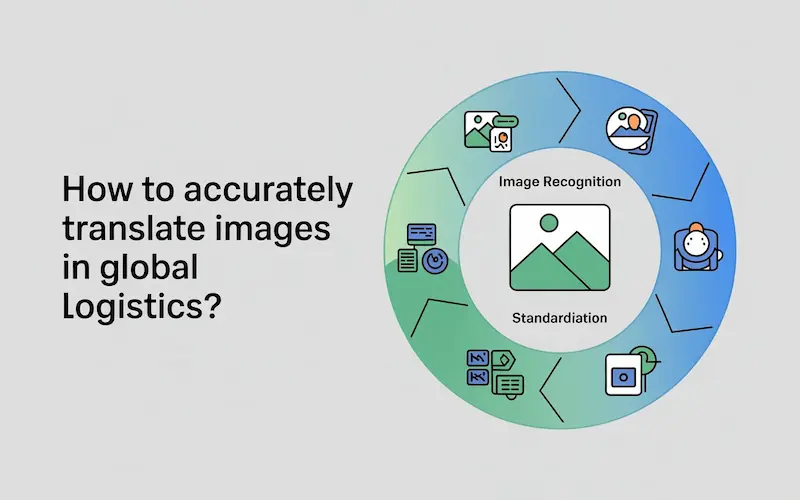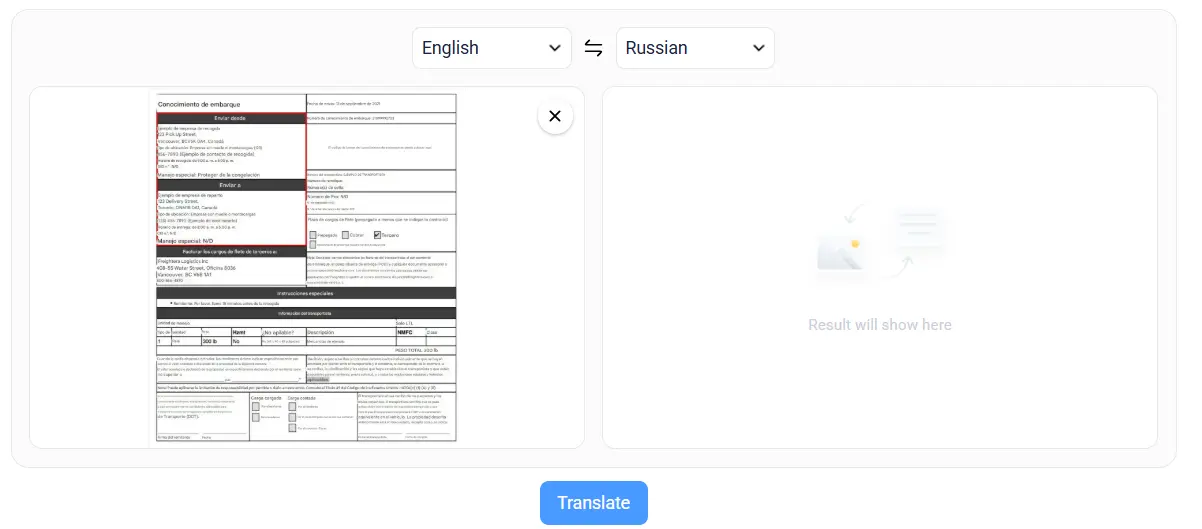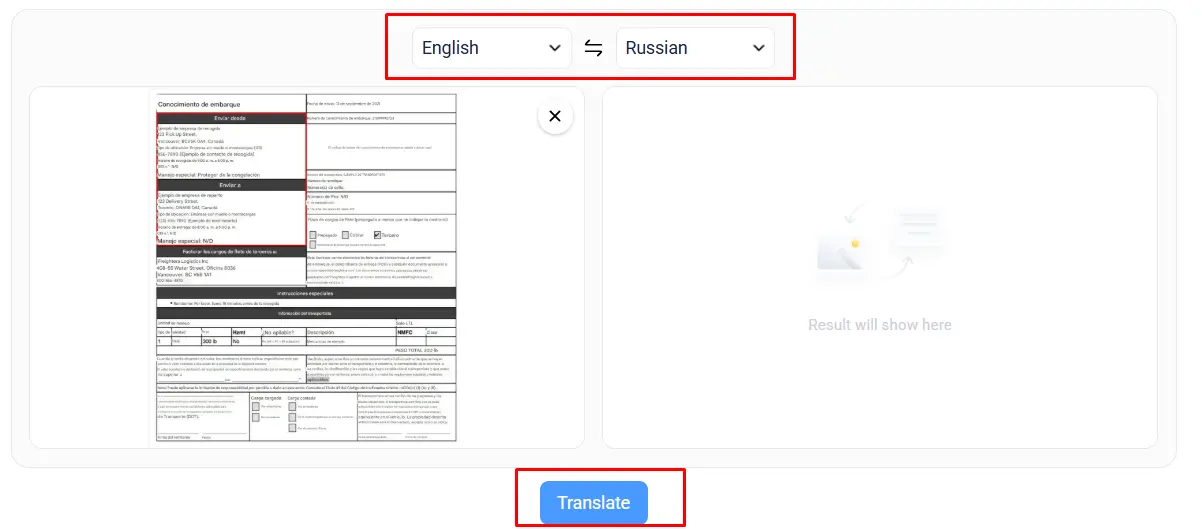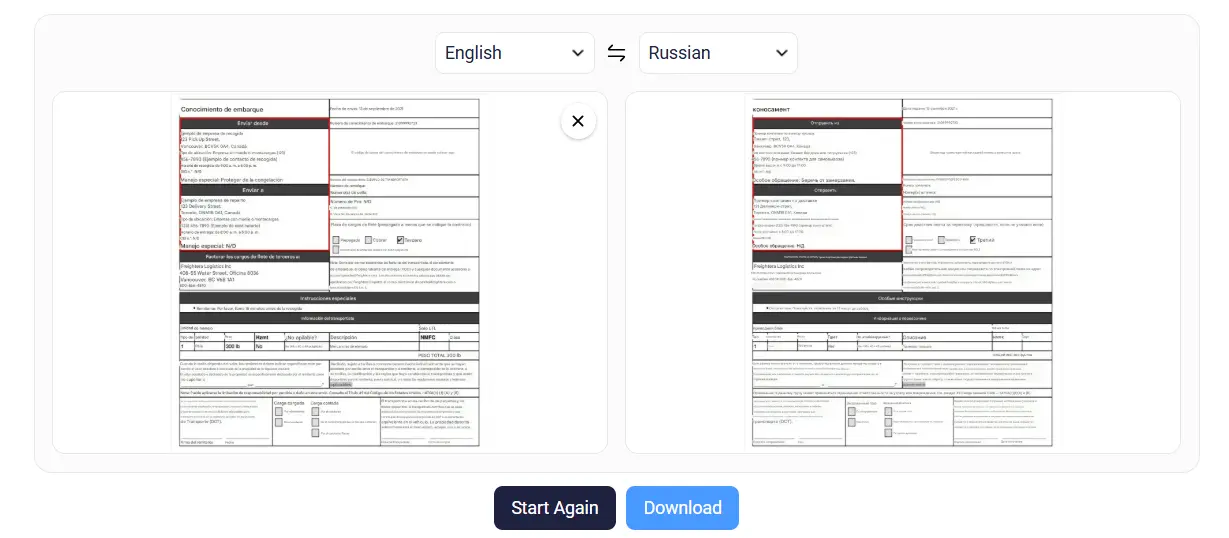How to Accurately Translate Images in Global Logistics?
Global logistics companies move goods across different countries and continents, as they often receive a large amount of documents in foreign languages. For global logistics, it is necessary to translate and understand these documents.
That is where image translation helps. Instead of just translating written text, professionals can now translate entire images, such as scanned customs documents, product labels, or instructions. However, even a minor mistake in this translation can result in big confusion. That’s why professionals always seek an accurate way to image translation.

Here, we are going to explain what image translation is, why it is important, and a step-by-step process for logistics professionals to accurately translate images.
What Is Image Translation?
Image translation is the process of changing the text written in images into a desired language. During this, the image’s colors, symbols, shapes, or designs remain intact. So, it involves only words.
This translation is performed using image translation tools that are based on Optical Character Recognition (OCR). OCR is a type of technology that allows image translators to read the text from images and translate it into another language.
Why Accurate Image Translation Matters in Global Logistics?
Accuracy matters a lot almost everywhere, especially in global logistics. A small error in logistics can lead to bad consequences such as customs penalties, lost shipments, or even rejection of cargo at borders. Most of these issues arise due to misinterpretation or misunderstanding of details written in foreign languages.
Here are some examples:
- A small mistake in image translation can result in a misunderstanding of instructions, which can then lead to damaged goods.
- In logistics companies, the mistranslation of images about import regulations can cause shipment delays.
- An error in product labeling translation could lead to compliance violations in highly regulated industries such as food and pharmaceuticals.
The above-mentioned issues can be avoided with accurate image translation. Accuracy will make sure that all the parties, including suppliers, freight forwarders, and customs officers, interpret the same information clearly.
A Step-by-Step Process to Translate Images In Global Logistics
Now, let’s discuss the process through which you, as a professional in global logistics, can do accurate image translation.
1. Choose A Reliable Image Translator
The first step is to pick a reliable and precise working image translator. There are several online platforms that offer image translation; however, not all of them come up with the same accuracy and efficiency.
In this scenario, we suggest doing in-depth research to find the most appropriate tool that could meet your global logistics translation needs.
Below are the must-have features that you should look for while selecting an image translator:
- Accuracy: The first and foremost thing you need to ensure is accurate working. For this, we suggest searching for an image translation tool, and shortlist the top-ranking options, then check each tool one by one practically to ensure which one provides accurate results.
- Various Languages: You should look for a tool that offers a wide range of languages to allow you to translate any foreign language without restriction.
- Faster Working: Another essential feature to look for in an image translator is quick processing. This feature will help you translate bulk documents in the minimum time.
- Secured Tool: As the global logistics companies deal with highly sensitive documents, it is important to pick a highly secure tool.
However, determining the most reliable image translator can be a difficult task for you. Don’t worry! We have further simplified this process for you. We researched different tools that offer image translations. After manually checking some prominent tools, we found Image Translator, which truly acquires all the above-mentioned features.
2. Input Image for Translation
Now comes the second step: input your image into the Image Translator that you want to translate. The tool provides different input methods, including upload, drag & drop, or input by URL.
Additionally, there is no specific requirement for the image format. The image translator supports JPG/JPEG, PNG, WebP, TIFF, and others.
To ensure accuracy, it is recommended to ensure that your image is properly cropped around necessary parts, clear to read, and doesn’t contain a mixture of languages.
Here’s the practical showcase of step 2:

3. Start Translation
The 3rd step is to select the input and output languages and start translation. By default, the Image Translator gives English as the input language and Russian as the output language. You can change them using the drop-down options.
Just click on the input language option, and a list of available languages will be shown; from there, select any one as per your need. Similarly, you should choose the output language in which you want the image to be translated.
Once you have set the languages, click the “Translate Image” to start image translation.
The below image illustrates the third step.

4. Check the Translated Images
The tool will take a few seconds to provide the result. After translation, compare the translated image of the bill of loading with the original one and read the translated text to ensure accuracy.
Here’s the Demo of the Result Delivered by the tool:

Once the results are up to your expectations (accurate), you can download the translated image by pressing the “Download” button.
As we translated a sample image, similarly, professionals in global logistics can follow the same process and translate their documents accurately.
Conclusion
Accurate image translation is important in global logistics for avoiding any type of confusion, misunderstanding, delays, and costly mistakes. In this blog, we have comprehensively explained the step-by-step process of translating images with the help of a popular Image translation tool. With the help of this tool, global logistics professionals can minimize risks, improve communication across countries, and make sure that all information is understood accurately.

Please Write Your Comments